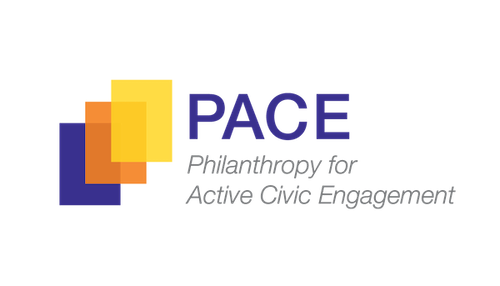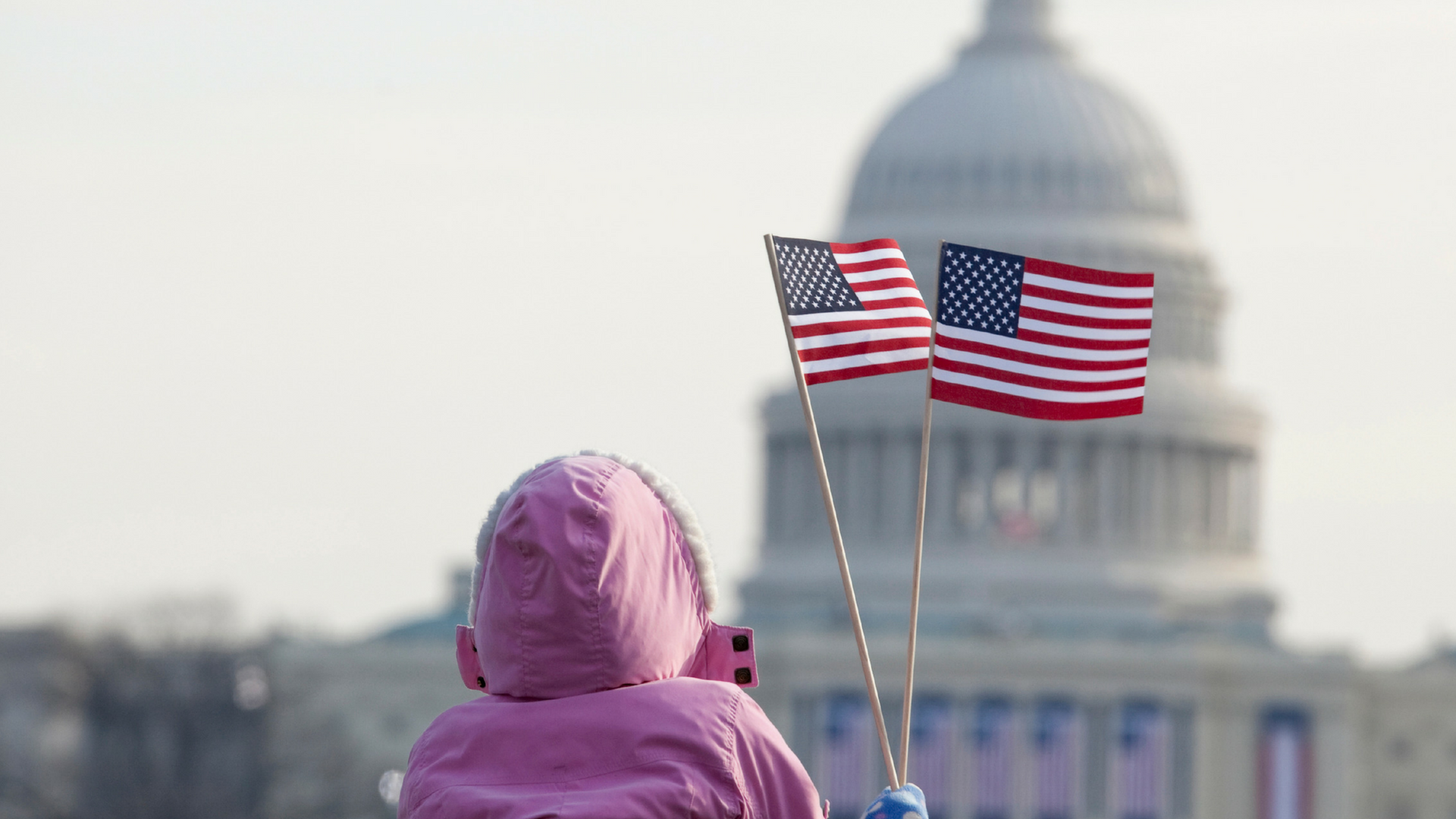In seeking to bridge divides and understanding the current challenges within democratic discourse, we should not risk overlooking the turbulent history of our country’s journey from democracy toward a multicultural democracy. It is here that the roots of today’s divisions live. Before examining how best to communicate across the current rhetorical divide, it will be essential to better understand the foundations of the often harsh and hyperbolic tone of American politics.
Civic tension, conflict, and violence—and efforts to bridge divides and heal wounds—are as old as American democracy. The issues that agitate American politics today—immigration, voting rights, trade, economic security, the proper response to terrorism—are all issues that have permeated our nation’s most tumultuous moments, from the Declaration of Independence, to the Civil War, and the Civil Rights movement to name a few, and are legacies of earlier civic tension and conflict. The founding of the United States was established by war with the British because of deep disagreements over governance, which also followed the colonization of land and genocide of indigenous First Nations.
Though stained by the complexity of its history, U.S. system of representative democracy has persisted, and remains a beacon of hope for many around the world. Today, as is true with many countries, the fate of liberal democracy is called into question in light of, among many things, the social and political divisions that have riven our public square. Therefore, it is more important than ever to acknowledge our history, where the roots of our divisions and tensions lie.
Often, in light of our nation’s divisions, many lean into bridge building efforts, and often default to calling for civility against the backdrop of the contentious debates of this political moment. But this moment requires us to situate our reality—and the philanthropic sector’s response—within a complete historical context before bridges can be built toward the future. Without this framing, our efforts can risk perpetuating or deepening existing issues.
The robust question of “how do we engage across divides?” is fundamentally different from the notion of civility. Bridging divisions requires imagination, creativity, and above all, an embracing of the complexity that is unique to human beings in social environments. People are members of social groups with numerous and complex identities and group attachments that figure crucially into their experience of the world. Notably, these identities do not only occur along red and blue, black and white, rural and suburban divides—those are the lines on which many bridge building efforts are focused.
Before we divide debates into two binary sides, it is critical to first understand the role of social identity. Many affiliations of identity are taught to a vast majority of people by their family, their culture, and their subcultures. Yet the complexities that lie within identities are often ignored in discussions of politics, especially in this current moment. We all have personal histories and perspectives that we bring to everyday life. And the hyperpartisanship and division in today’s public discourse often reflects a disconnect between the way democratic institutions engage citizens and the way citizens understand their social identities.
Every person brings their own complex and multi-layered personal histories, thoughts, emotions, current reality, and reactions toward uncertainty into the public square every day, which makes both organizing and governing societies incredibly complex. And our ability to find ways for people to engage more fully—with all aspects of their identity—will ultimately determine the success of any attempts to bridge large-scale divisions in society.
The binary “sides” that form the predominant framework of most civic discussions almost immediately creates anxiety among individuals asked to digest the topic and form a perspective that aligns with the prevailing consensus of the binary side they’ve been asked to represent. This results in discussions that are fundamentally limited, and that prioritize opposing viewpoints and partisanship rather than open-minded discussion and debate.
Over the past few years, scientists and researchers have made strides in their understanding of human nature and the cognitive and social science of hyperpolarization. For example, in a world of rapid social change, anxiety can be a natural (but manageable) side-effect, causing individuals to turn to “othering” groups that are different from themselves. Additionally, researchers have found that social identity is directly tied to self-esteem and worth, and the need for attachment to identity grows under conditions of (real or perceived) uncertainty or threat.This knowledge, combined with the powerful platforms and tools of social media, can be used for good or for ill. In order to reverse the hyperbolic tone of the debates in our communities we must better understand the core beliefs of Americans and the differences that are currently used to divide. Civil society institutions can use this understanding not to deepen polarization, but to bring people together.
Before examining how best to communicate across these many divisions in society, it may help to try to understand the foundations of the often harsh and hyperbolic tone of American politics. While Americans may appear to be divided by race, class, gender, and other demographic factors, there are other, less visible divisions beneath the surface that cut across the demographic factors that if addressed could provide opportunities for bridge building.
For example, the “working class” as it is currently used in civic and political discussion often refers to “white” working class individuals (often men) in specific geographic regions within predominantly rural communities, such as economic programs to support historically white male dominated industry job loss, like coal-mining. If we took concerted efforts to expand the framing of socio-political terms like “working class” to encompass a broader (and more accurate) representation of the vast swath of America that truly comprises it, this could provide an opportunity to seed new spaces for civic engagement and bridge building.
Especially today—and often reinforced in the media—there can be a tendency to group citizens and frame debates around dichotomous terms like black and white, Democrat and Republican, citizen and immigrant, etc. This is not only insufficient foundation for meaningful paths forward, it fundamentally minimizes the human experience. In hopes of avoiding division, we often ask that citizens leave the multifaceted perspectives informed by their lived experiences—their moral and spiritual convictions, their culture, family life, and more—behind when they enter the public square. Durable bridge building efforts require more.
Embracing Complexity
What is necessary to create healthy discourse is for institutions to seed, support, and sustain physical and in-person spaces for people to embrace complexity and meet others with different views in an environment that fosters listening and respectful engagement. Differences in core beliefs do not disappear, but these differences—which are constantly magnified by the dominance of binary frames and online engagement—are placed into an entirely different context through authentic, person-to-person contact. Furthermore, there are voices and perspectives we would not hear without creating space for people’s full complexity.
For example, in most communities across the country, public civic spaces are becoming less accessible and in turn, there are less opportunities for people of different walks of life to engage or even encounter one another. Civic institutions have an opportunity to support existing civic spaces—such as libraries and community centers—as well as support new and innovative ideas for bringing people together in ways that strengthen our civic fabric. Most importantly, civic institutions can use their convening power to highlight the complexity at the heart of the pressing issues of the day while modeling how citizens can navigate the healthy tension that can exist when different perspectives are heard and considered.
When we fail to allow for complexity in our discussions of contentiously debated social and economic issues, we risk creating a moral vacancy in our public square. The result is a disappearance of notions of common humanity and common good from public discourse. Debates about issues become like sports competitions, with clear winners and losers instead debates about the best ideas for all of society.
Therein, civic engagement—or simply coming together—alone is not a panacea to solve civic discord. Appeals to civic engagement must celebrate and advocate that citizens participate with a complex understanding of their social identities. Our collective reluctance to wrestle with the complex identities and perspectives citizens bring to our most contentious debates has exacted a heavy price: draining our public discourse of moral and civic energy, and risks deepening the very divisions we wish to bridge.
In short: when we oversimplify the differences inherent in our public debates, we risk eliminating the humanity in them as well. Leaning into the complexity inherent in our shared human experience will make authentic debate and connection possible. Rather than being driven to avoid tension, we can see the rancor in our current public discourse as complexity that we now have an opportunity to address: How can we do justice to what we’re learning in this moment as we listen to the true diversity of voices in our public square? And how can this be instructive to our sector, moving forward?
For example, the debate about immigration is not about one particular country or people; however, because we have ceded the immense complexity of the topic to a political cycle that avoids the complex in favor of political expediency, the crux of the issue has crumbled into a heated, contentious—and relatively superficial—debate, that fails to address the moral and ethical questions at the heart of it.
This flattening of debate is not accidental. At the center of our most divisive issues are those who seek to take complex social/political issues and elevate (or deflate) them to their most incendiary components, in an attempt to rally and influence certain constituencies or identity groups. This influence can undermine the civic discourse and debate about complex issues, destroying what may be robust alignment in perspectives by exploiting areas of perceived difference.
In order to navigate the divisions of this moment, we will need to have conversations we haven’t had before—empowered by differences rather than bridged by trite similarities. This will require creating spaces where people can be their full selves, and therefore engage authentically with others. It will make room for the moral and spiritual convictions at the root of deeply held beliefs to be accessed, witnessed, and seen as legitimate (where they might otherwise be dismissed), and build the kind of foundation for bridge building that can stand the test of time—one based on shared values and common humanity.
Philanthropy’s Role
As organizations consider the human element at the center of bridge building efforts, it is important to acknowledge that uncertainty is a necessary part of the process. While institutions often deal in clear answers and concrete action steps, authentically navigating our divisions will require a higher tolerance for uncertainty—or perhaps, a different understanding of uncertainty—as a point for observation and possibility, rather than a lack of clarity. Funders can help model this.
Another opportunity for civic engagement philanthropy to substantially improve civic discourse is by implementing a communications and outreach strategy that affirms a more complex framing of the most pressing issues of the day—priming individuals to approach issues from a place of complexity and public good, rather than how their team or political party can “win.” Although this will likely be uncomfortable for many institutions, a more intentional approach also means pushing back on framing that seeks to minimize or obfuscate the complexity of issues for the sake of political expediency.
This approach can contribute to a more productive and robust level of civic discourse that does more than solve problems – it can help create the conditions for a vibrant civil society with trust and respect.

